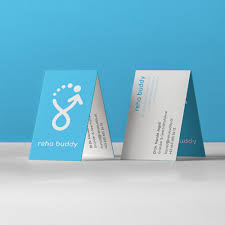The Future of Injury Recovery? RehaBuddy’s Smart Habit Architecture
Recovering from an injury is rarely a straight path. Even when physiotherapists provide a detailed exercise plan, the real challenge begins at home—where consistency, motivation, and proper guidance become essential. Many people start strongly, but without a structured system, rehab exercises get skipped, forgotten, or performed incorrectly. This slows down recovery and often leads to frustration or re-injury.
RehaBuddy is reshaping this experience with what can be called a smart habit architecture—a unified system designed to help users build exercise habits, maintain consistency, and stay committed to their recovery goals. Through features like RehaBuddy daily exercise reminders, guided physiotherapy exercises, and an intelligent exercise habit tracker, the app provides the structure users need to recover effectively.
Below is a detailed look at why RehaBuddy’s habit-focused design is the future of injury rehabilitation.
Why Habit Architecture Matters in Recovery
Recovery is not only physical—it’s behavioral. Physiotherapists know that daily repetition is necessary for muscles to heal, mobility to return, and strength to rebuild. But forming a daily routine without support is difficult. Most people struggle to:
- Remember their rehab exercises
- Monitor progress
- Stay motivated through slow recovery phases
- Create long-term exercise habits
RehaBuddy’s smart habit architecture solves these issues by helping users build strong habits rooted in repetition, tracking, and goal-setting.
RehaBuddy: A Rehab App Built Around Smart Habits
Unlike generic fitness apps, RehaBuddy is designed specifically for injury recovery. It functions as a rehab app programmed to guide users through the behavioral side of rehabilitation—not just the physical exercises.
Its smart habit architecture includes three core layers:
- Daily guidance through reminders
- Structured habit development and tracking
- Clear recovery goals tied to progress tracking
Each element supports the others so users experience a smooth, consistent rehabilitation journey.
Layer 1: Daily Exercise Reminders for Consistency
At the foundation of RehaBuddy’s habit system is its powerful daily exercise reminders feature. These reminders help ensure that rehab exercises don’t get overlooked during busy days. Consistency is key to healing, and this tool offers a simple, effective way to keep users accountable.
Instead of relying on memory or scattered reminders, users receive timely prompts that make it easier to follow their physiotherapy exercises every day. Over time, these reminders help to build exercise habits naturally.
Layer 2: Building Lasting Exercise Habits
RehaBuddy works as a dedicated habit building app, but unlike general habit trackers, it is made specifically for injury recovery. This makes its design more intuitive, personal, and effective for users who need structure during rehabilitation.
The app helps users:
- Create daily or weekly routines
- Reinforce movement repetition
- Reduce the mental load of planning rehab sessions
- Replace inconsistency with a predictable system
By guiding users through small, repetitive actions, RehaBuddy strengthens habits that support long-term recovery.
Layer 3: Physiotherapy Exercises Made Clear and Simple
Smart habit architecture only works when the actions themselves are easy to follow. RehaBuddy ensures this by offering clear physiotherapy exercises tailored for injury recovery.
Users benefit from:
- Step-by-step instructions
- Easy-to-understand movements
- Exercises recommended specifically for rehabilitation
These guides help users feel confident performing rehab exercises at home, reducing the risk of error and improving overall recovery quality.
Track Progress for Physiotherapy and Stay Motivated
A major part of habit formation is seeing results. RehaBuddy makes this possible through advanced progress tracking for physiotherapy.
Users can track progress across:
- Completion streaks
- Range of motion improvements
- Strength changes
- Pain reduction
- Daily consistency
The built-in exercise habit tracker provides visual feedback that keeps users motivated, especially on days when recovery feels slow. Small improvements add up, and seeing them displayed clearly helps users stay committed.
Achieve Clear and Realistic Recovery Goals
The app allows users to set personalized recovery goals based on their condition, injury severity, and physiotherapy plan. These goals serve as a roadmap, helping users stay focused and intentional throughout the recovery process.
Clear goal-setting ensures that each rehab session feels purposeful, reducing frustration and improving consistency.
Why RehaBuddy’s Smart Habit Architecture Is the Future
RehaBuddy’s approach represents a shift from exercise-based rehabilitation to habit-based rehabilitation—a method that aligns with how people actually behave when recovering from injuries.
This future-focused architecture works because it:
- Reduces the cognitive load of recovery
- Makes physiotherapy exercises easier to follow
- Encourages repetition needed for healing
- Helps users build strong, sustainable exercise habits
- Turns recovery into a step-by-step routine rather than a struggle
- Tracks progress visually to reinforce motivation
As rehabilitation becomes more digital, tools like RehaBuddy will lead the way by blending behavioral science with physiotherapy principles.
Final Thoughts
Recovery is a journey built on consistency, and RehaBuddy delivers the structure people need to succeed. With its smart habit architecture, the app simplifies RehaBuddy Rehab exercises, supports users through daily exercise reminders, helps them set recovery goals, and empowers them to track progress with clarity. For anyone serious about healing correctly and staying consistent, RehaBuddy is a tool that makes the entire process easier and more effective.
As technology continues shaping the health and wellness world, RehaBuddy is clearly positioned at the forefront of the future of injury recovery.




